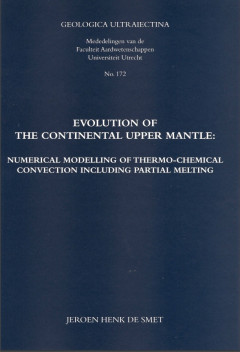Ditapis dengan
Ditemukan 3 dari pencarian Anda melalui kata kunci: subject="mantle"

The Old Mantle of G .Merapi(See Plate IIIa and IV)., A Few Considerations On …
As already earlier mentioned the G. Herapi exists of two morphologic clearly to be distinguished parts, an older eastern and a younger western part. From the sunnit of the old ringdike, only a small part remains (see portrait 14), of which the eastern part is named G. Pusunglondon (2694.3 a.s.) and the northern G. Paseban (2679= a.s.). The old volcano mantle of the G. Merapi has grown much more…
- Edisi
- -
- ISBN/ISSN
- -
- Deskripsi Fisik
- 9 hml.; tabel
- Judul Seri
- -
- No. Panggil
- PVG E.21-6

Subduction of The Tethys Oceans Reconstructed From Plate Kinematics and Mantl…
The Tethys Oceans separated the African, Arabian and Indian continents from Eurasia in Mesozoic-Cenozoic times. When the Atlantic Ocean opened, the continents started to converge and the Tethys Oceans gradually began closing.
- Edisi
- -
- ISBN/ISSN
- 90-5744-101-2
- Deskripsi Fisik
- 200 hlm.;gbr.
- Judul Seri
- -
- No. Panggil
- PVG (043)551 HAF s c.1

Evolution of the Continental Upper Mantle : Numerical Modelling of Thermo-che…
This thesis elaborates on the evolution of the continental upper mantle based on numerical modelling results. The descriptive and explanatory basis is formed by a numerical thermo-chemical convection model. The model evolution starts in the early Archaean about 4 billion years ago. The model follows from the conservation equations, which are based o…
- Edisi
- 172
- ISBN/ISSN
- 90-5744-029-6
- Deskripsi Fisik
- pp. 1 - 137
- Judul Seri
- Geologica Ultraiectina
- No. Panggil
- BSL 551.24 SME e
 Karya Umum
Karya Umum  Filsafat
Filsafat  Agama
Agama  Ilmu-ilmu Sosial
Ilmu-ilmu Sosial  Bahasa
Bahasa  Ilmu-ilmu Murni
Ilmu-ilmu Murni  Ilmu-ilmu Terapan
Ilmu-ilmu Terapan  Kesenian, Hiburan, dan Olahraga
Kesenian, Hiburan, dan Olahraga  Kesusastraan
Kesusastraan  Geografi dan Sejarah
Geografi dan Sejarah